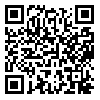BibTeX | RIS | EndNote | Medlars | ProCite | Reference Manager | RefWorks
Send citation to:
URL: http://jdc.tums.ac.ir/article-1-5533-en.html

 , Zahra Cheraghi2
, Zahra Cheraghi2 
 , Yasamin Farzaneh3
, Yasamin Farzaneh3 
 , Zakieh Dehbashi3
, Zakieh Dehbashi3 
 , Mahtab Dorrian3
, Mahtab Dorrian3 
 , Mahyar Keymaram4
, Mahyar Keymaram4 
 , Azam Fattahi *
, Azam Fattahi * 
 5
5
2- Student Research Committee, School of Medicine, Shahid Beheshti University of Medical Sciences, Tehran, Iran
3- Student Research Committee, School of Pharmacy, Shahid Beheshti University of Medical Sciences, Tehran, Iran
4- Department of Medical Parasitology and Mycology, School of Medicine, Iran University of Medical Sciences, Tehran, Iran
5- Center for Research and Training in Skin Diseases and Leprosy,Tehran University of Medical Sciences, Tehran, Iran ,
Background and Aim: Onychomycosis is an infection caused by yeast, filamentous and non-filamentous fungi, due to diverse conditions. This study aimed to investigate the pattern of azole susceptibility of candidate species isolated from Iranian patients in Tehran.
Methods: After sampling from patients, identification of the isolated strains were performed with Candida chrom agar medium and PCR-sequencing test. Drug Susceptibility pattern of the species to fluconazole, itraconazole and ketoconazole were determined by CLSI-M27-A3/S4 standard method.
Results: In this study, 34 candidate isolates were identified, of which 26 isolates (76.5%) were Candida albicans and 8 isolates (23.5%) were Candida glabrata. In fluconazole, 4 (11%) of the isolates were dose-dependent sensitive and the others were sensitive. In itraconazole, 21 (61%) dose-dependent isolates and 2 (5%) resistant isolates were identified, and in ketoconazole, all isolates were sensitive. The geometric mean (GM) of the minimum inhibitory concentration for fluconazole, itraconazole and ketoconazole was 0.32, 0.21 and 0.15 μg/mL, respectively. In this study, the most frequently isolated species was C. albicans. According to the GM values, the most effective azoles was ketoconazole.
Conclusion: The prevalence and pattern of susceptibility of Candida species to azole may vary in different populations of patients. Therefore, it is recommended that the clinicians pay attention to the results of drug susceptibility tests and then treat patients by considering drug interactions and side effects.Received: 2021/10/3 | Accepted: 2021/08/7 | Published: 2021/08/7
| Rights and permissions | |
 |
This work is licensed under a Creative Commons Attribution-NonCommercial 4.0 International License. |



